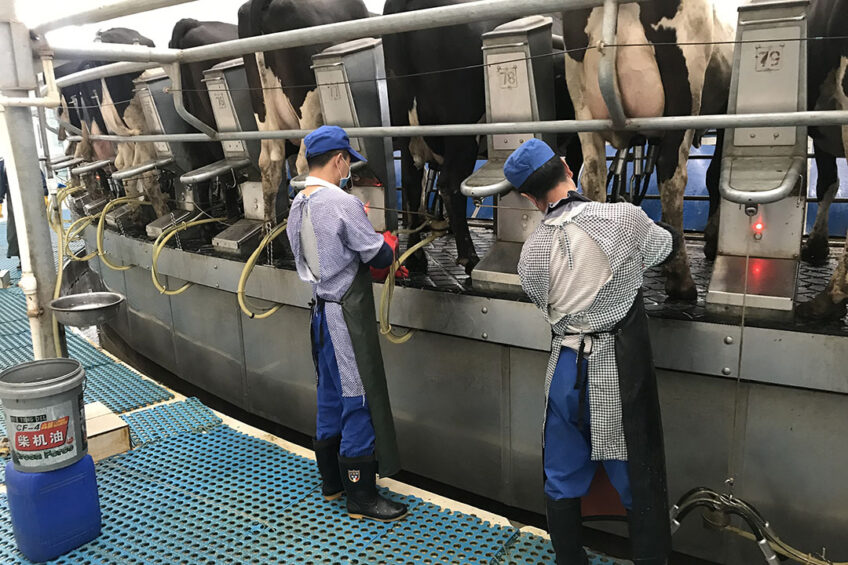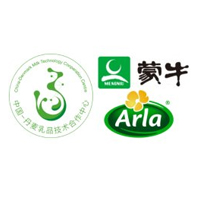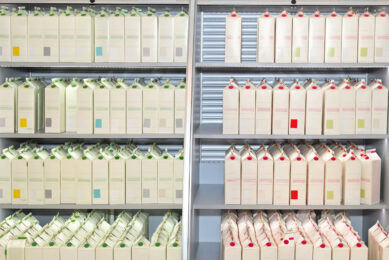A look through time: Transformation of China’s dairy sector

In 1949, there were only 120,000 dairy cattle in China, with an annual milk production of 192,000 tonnes, an average yield of just above 3 tonnes per cow. At that time the per capita consumption of dairy products in the country was 0,4 kilogrammes. 60 years later, in 2019, the total number of dairy cattle in China was around 6 million.
Milk production has surpassed 32 million tonnes and the per capita consumption of dairy products has stunningly increased to over 30 kg. Even though this huge development of dairy farming in China has taken place over 60 years, the main changes have happened in recent times.

Development of dairy farming in China
Since 1949 and spanning 30 years thereafter, dairy farming in China developed with the slow increase in demand for dairy products within the country. To respond to this increase the government decided to build dairy enterprises and milk source bases in various places. This led to the development of state-owned dairy farms close to large and medium-sized cities such as Beijing, Shanghai, Tianjin, Chongqing, Shenyang, Guangzhou, Harbin, Nanjing, and Kunming. The foundation of those state-owned farms made it possible for the dairy industry to develop but due to the difficult economic situation in China at the time the growth was still relatively slow. By 1978, the number of dairy cattle in China had increased to 480,000, and the annual milk production reached 883,000 tonnes, with a dairy product consumption per capita close to 1 kg.
Interview: “You would not expect farms in the deserts of China”
Do large-scale dairy farms come to mind when thinking of China? The last few years have seen a huge change in the dairy farming sector in China. Snorri Sigurdsson, senior project manager at Arla Foods, tells us more about how rapidly the sector is taking shape with some farms boasting tens of thousands of cows. With dairy farms even set up in the deserts of China, this impressive transformation is a trend predicted to continue as the country’s dairy industry is currently making huge leaps. Read the interview…
In 1949 the proportion of individual owned dairy cows was only 6.25%, but in 1997, 20 years after the government started to encourage the private sector to go into dairy farming, the percentage had reached 82.62%.”
Reform period of Chinese dairy farming
In 1978, the state started to encourage the private sector to go into dairy farming and this promotion influenced the development in a major way. Within 20 years, the nationally owned, collectively owned, and individually owned farming businesses developed alongside each other and this period in Chinese dairy farming history can truly be called a reform period where dairy farming moved from state-operated farming to individually-operated farming. In 1949, the proportion of individually-owned dairy cows was only 6.25%, but in 1997, 20 years after the government started to encourage the private sector to go into dairy farming, the percentage had reached 82.62% and the number of dairy cattle had increased to a stunning 4,4 million.
This big change, in only 20 years, was possible because of the introduction and application of key technologies in dairy farming. The level of dairy farming in China had increased significantly in this period, and this can be traced to many factors – use of a better dairy breed, TMR feeding technology, and better milking equipment technology also had big impact on this development.

Chinese Holstein cow breed
The introduction of foreign Holstein breeds, imports of live heifers, and crossbreeding with the local cattle led to, after long-term selection and breeding, the establishment of the Chinese Holstein breed, also known as ‘Chinese Black and White Cattle’, which was named ‘Chinese Holstein Cattle’ in 1992. This was China’s first dedicated dairy cow breed and this is still the case today.
In 1985, new varieties of special and dual-purpose silage maize were cultivated. This change marks a new era in Chinese dairy farming and the effect could soon be seen in the yield of the dairy cows.”

Feed production – new maize better yields
The production and application of corn silage began when the People’s Republic of China was established in 1949, and it was mainly promoted and applied in some large state-owned farms and dairy farms in the suburbs. Before the 1980s, there were no special maize varieties known in China that were specially meant for silage production, but in 1985, new varieties of special and dual-purpose silage maize were cultivated. This change marks a new era in Chinese dairy farming and the effect could soon be seen in the yield of the dairy cows.
Technology and milk production efficiency
Even with the world’s milking machine history of more than 100 years, the technology had not really reached China in the 1980s, and at that time, milking machines were used on less than 0.5% of the farms and the rest was accustomed to handmilking. In 2008, the ratio was still low, close to 40%, but this has since changed and now the majority of all milk comes from farms using milking machines. This development played a great role in improving the efficiency of milk production in China. Other technology also had a huge impact and that was the introduction and promotion of TMR mixing technology. Studies had shown that TMR feeding could reduce feeding costs, increase the labour efficiency, increase the feed utilisation rate, make the milking curve from the dairy cows more stable, and increase the yield, too. This was promoted almost all over the country and led to a shift in the feeding method within a short space of time.
China: Preventing heat stress in non-milking animals
In just a few years the landscape of Chinese dairy farming has changed dramatically, going from small household farms to professional and effective dairy operations. Successful farm management is therefore a top priority, especially when it comes to heat stress which can affect all animals on-farm. Read more…
Last 20 years a major game changer
With the technological transformation, the upgrading of domestic dairy farms and dairy companies, the foundation for an even faster change was possible. Along with improved infrastructure and modernisation of distribution channels within China, the promotion of dairy products could take off and this called for more production.

This also influenced rapid development of the dairy industry and led to the rapid growth of both Mengniu and Yili, the 2 biggest dairy companies in China. Large-scale dairy farming also found its way into China with the establishment of big dairy farms that are privately owned and also dairy farming companies like Modern Dairy (Group) Co., Ltd. (‘Modern Dairy’) that was established in September 2005 and listed on the Hong Kong Stock Exchange market in 2010. This one company owns 26 dairies today, one of which is Bengbu farm with 20,000 milking cows and which has in total 230,000 dairy cattle. But Modern Dairy is not alone in China, many other dairy farming companies, like Shengmu, Fuyuan & AustAsia, to name some, are also operating in China, each with tens of thousands of cows and many different dairy farms. The big-scale farming has led to high professionality within dairy farming operations that is also reflected by the production of the cows with the best of the big scale farms producing over 40 kg/cow/day.
Today, the estimated average yield is close to 8,5 tonnes/year/cow and the milk production in China is now close to 35 million tonnes – no doubt an impressive change from the 0,2 million tonnes in 1949 and 0,9 million tonnes in 1978.
Join 13,000+ subscribers
Subscribe to our newsletter to stay updated about all the need-to-know content in the dairy sector, two times a week.










